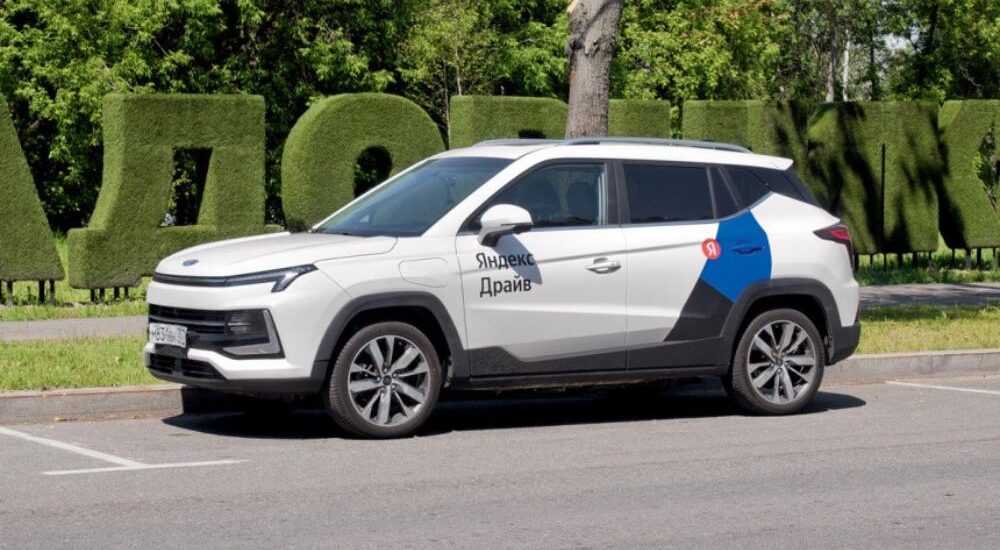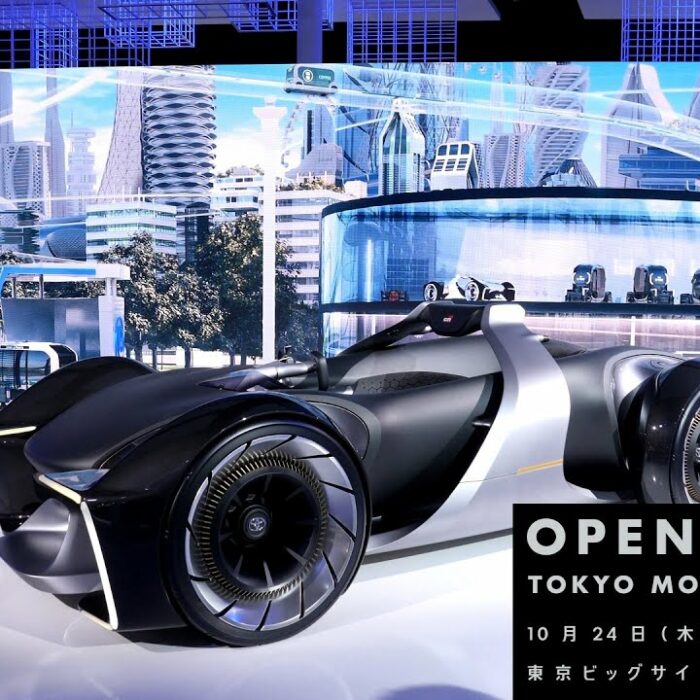At Autoreview, we’re almost pioneers in using car-sharing vehicles for testing. When Toyota was reluctant to lend us the then-new RAV4, we took turns testing it through car sharing. Just a month later, we conducted a comparative test between rented Audi A3 and Mercedes CLA sedans, as press fleets were closed due to the COVID quarantine. Now, press fleets are operating again, but… to get familiar with the electric Moskvich 3e, I’ve once again opened my short-term rental app.
I use short-term car rental services about once a week. For example, on days when an evening gathering with friends at a bar is planned, requiring a metro ride home. Or for trips to Moscow’s center, where parking is very expensive. It was exactly on one of these occasions that I got to know the electric vehicle, although first, I had to track it down.

There are hundreds of petrol-powered Moskvich 3 crossovers in Moscow car-sharing services, but electric versions can be counted on one hand. For a long time, they were always too far away: whenever I checked the app, the closest available electric car was on the other side of the city. Waiting for someone to bring it to my street could have lasted forever, so when a Moskvich 3e rental appeared in my area, I promptly drove to it using another petrol-powered car.
Not many people want to drive an electric Moskvich, primarily because minute-by-minute billing isn’t available. You either set an address, and the app calculates the total trip cost immediately, or you rent for a fixed time (30, 60, or 90 minutes) at a fixed price (440, 850, and 1220 rubles respectively). I chose the latter.

The Moskvich’s interior does not try to seem expensive, all finishing materials are simple – even soft inserts with artificial stitching
The Moskvich 3e awaited me near a residential building in Nagatino. An external inspection revealed no damage, but upon entering the cabin… this is precisely why I dislike car sharing. Folks, rental cars shouldn’t be treated so poorly! Dirt on seats, dirt on the floor, papers in the cupholders. Shame on these careless drivers! Thankfully, I brought cleaning wipes, quickly restoring the interior to an acceptable condition. Now, let’s drive.

Virtual instruments can only have their color scheme changed
The transmission control dial spins endlessly—like in the Jolion—without any stops, but clicks are distinct, and electronics switch modes without errors or delays. Selecting D and releasing the brake does nothing; the Moskvich only moves upon pressing the accelerator, and this setting can’t be changed.
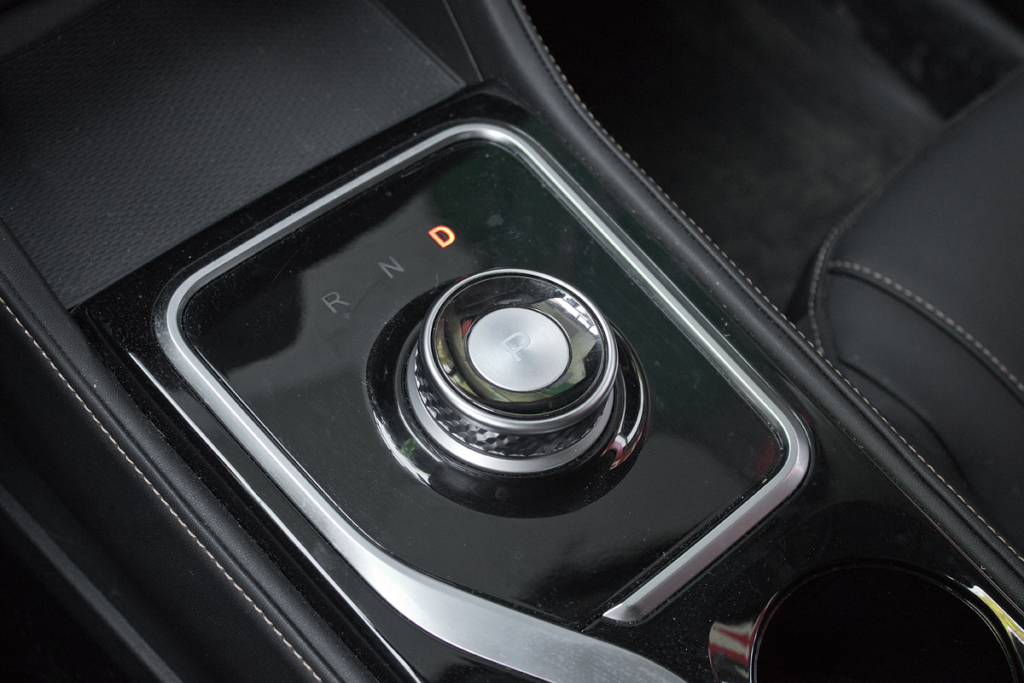
The main difference between the electric car’s interior and the fuel version is the transmission control washer instead of the lever.
In the default Eco mode, the crossover is extremely sluggish and helpless. It seems entirely unresponsive for the first third of the pedal travel, requiring nearly full throttle to match the pace of Moscow traffic. This lazy behavior is particularly inconvenient during parking maneuvers, forcing overly exaggerated pedal movements, creating confusion.
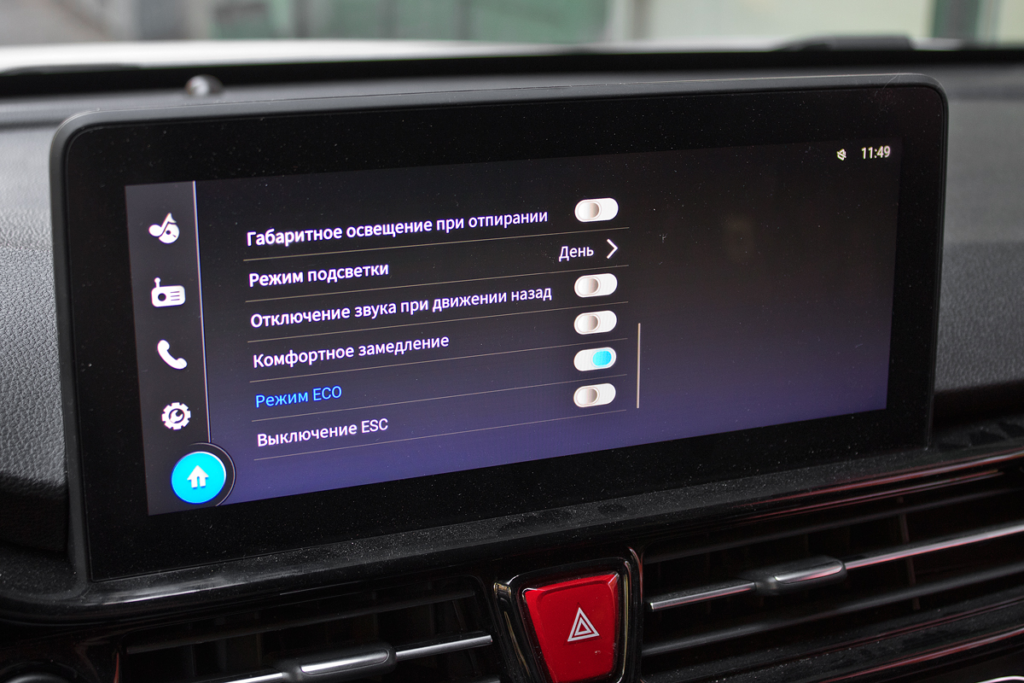
Disabling Eco mode via the media system transforms the car dramatically. Now there’s no doubt the motor delivers the claimed 193 hp, despite the considerable curb weight (1800 kg, including a 438 kg battery). Yet, throttle response raises questions—the Moskvich initiates acceleration only after a second’s delay, regardless of how much the pedal is pressed. It feels like driving an emissions-strangled petrol car rather than an electric one.
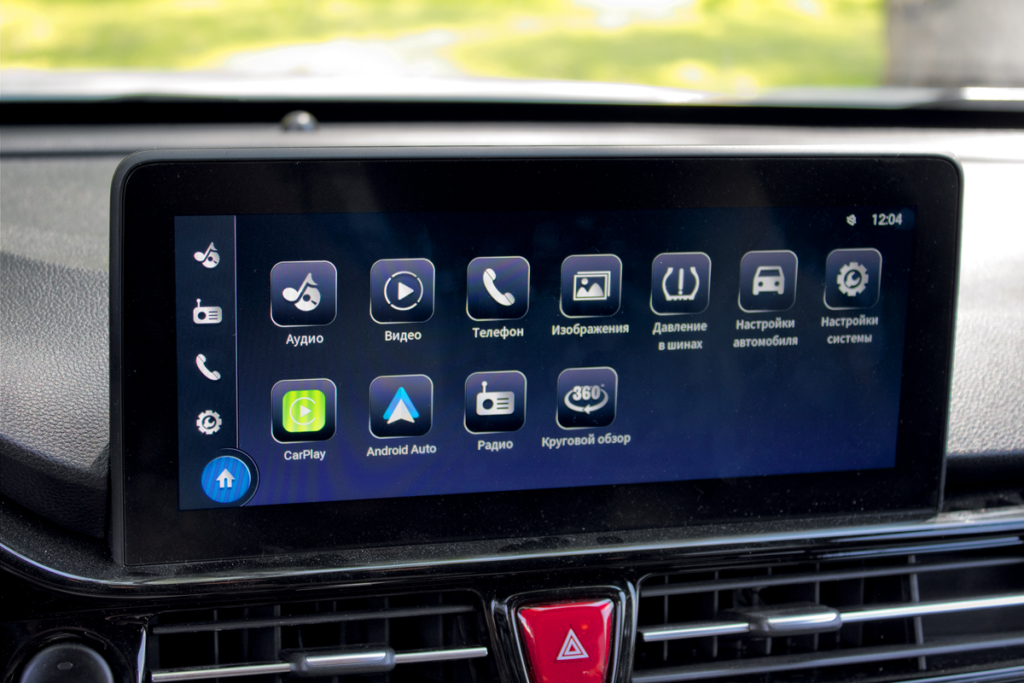
The media system has a sensible Russification and a clear menu structure. The touch screen responds to touches without delays, and pressing is confirmed by sound.
However, once it starts moving—it’s a hurricane! On asphalt heated by 30°C weather, the Moskvich 3e, with its 340 Nm of torque, spins the front wheels—not just from a standstill but even at 60 km/h. Interestingly, it wears reputable Michelin Primacy 4 tires, albeit made in China, not cheap no-name rubber. Traction control operates roughly, periodically cutting and releasing torque at relatively low frequencies by modern standards.
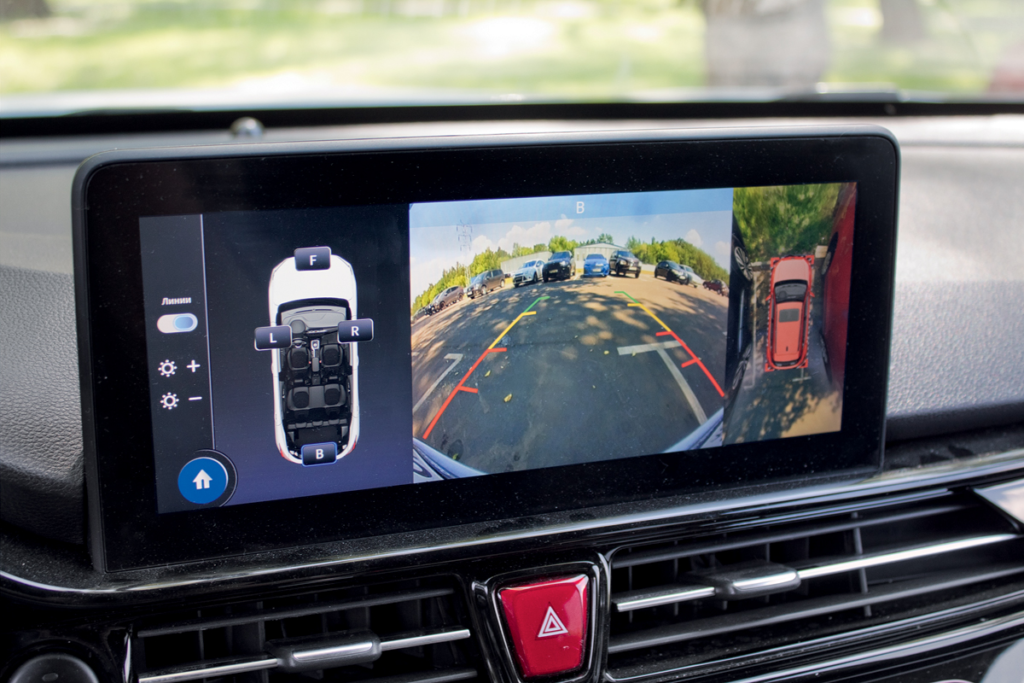
The picture from the all-round cameras is bright and vivid, but the focal length is poorly chosen
On wet asphalt, wheelspin becomes excessively intrusive. Nevertheless, on dry roads, the Moskvich accelerates to 50 km/h in about 3.5 seconds, likely surpassing the official 0–100 km/h figure (9.7 s). Still, neither available driving mode suits everyday driving well. The unnamed standard mode feels more like Sport, suggesting a need for an additional, calmer setting.
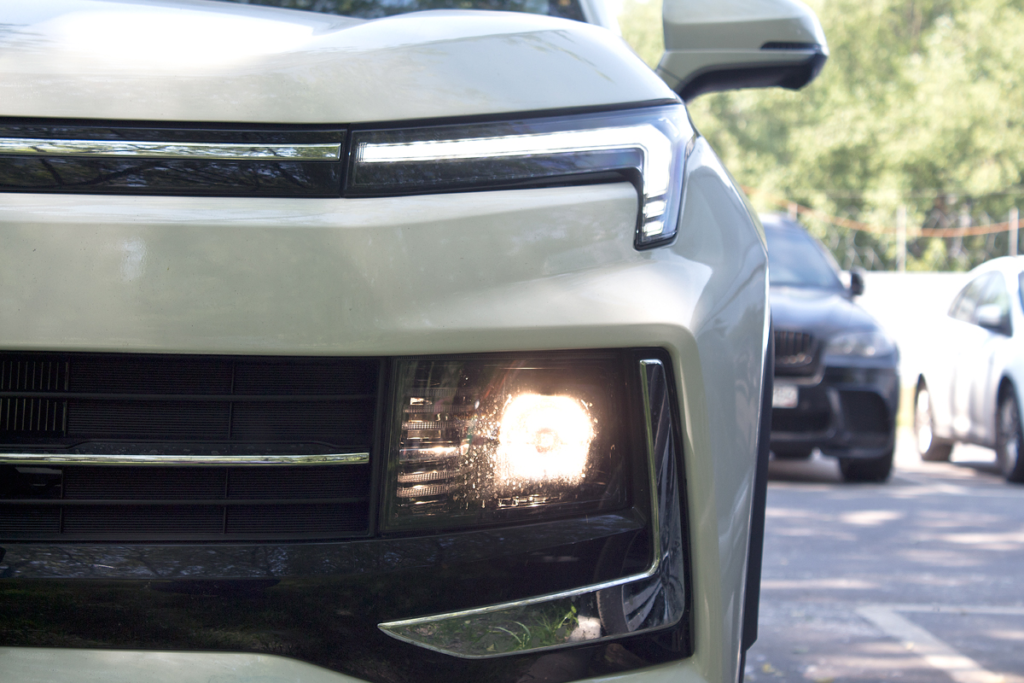
Electric Moskvich has LED headlights, but with a manual corrector
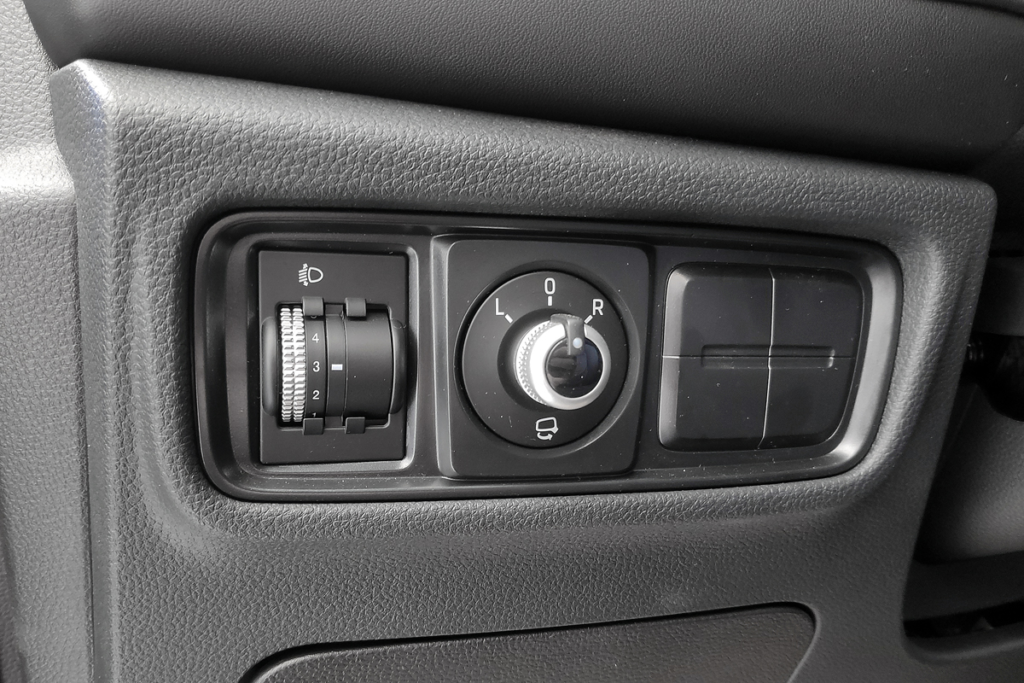
One pleasant electric car advantage is its taxable horsepower, rarely advertised by manufacturers but important for tax calculations, which consider the electric motor’s continuous 30-minute power output. For the Moskvich 3e, it’s just 68 hp, significantly lower than the peak power. Even if Moscow reinstates a transportation tax for electric vehicles, it would be just 816 rubles annually. Incidentally, the 30-minute continuous torque is 120 Nm.
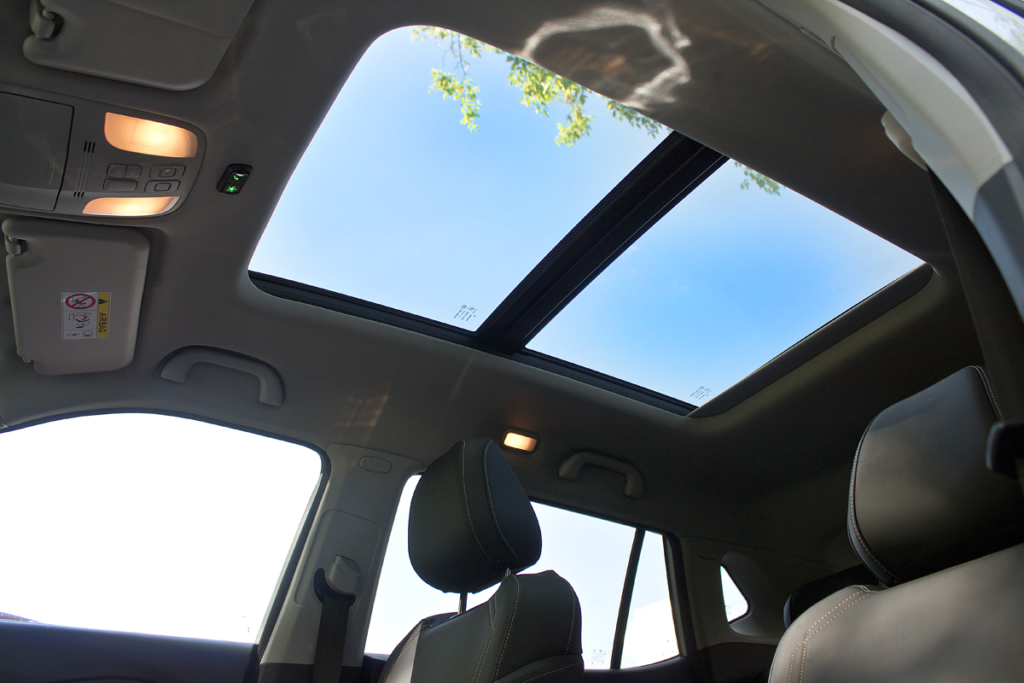
The panoramic roof with a sliding section is exclusive to the electric Moskvich. The petrol ones only have a small hatch.
Regarding range, the Moskvich isn’t China’s JAC Sehol E40X, but its… European version! Yes, JAC’s international website explicitly states: “EU version,” even though JAC isn’t represented in Europe. This version features a modern 65.7 kWh lithium-ion battery with an NCA cathode (nickel-cobalt-aluminum), advanced thermal management, and a heat pump, unlike the simpler 55 kWh lithium-iron-phosphate battery used domestically in China. Due to the “European specification,” the Moskvich uses a CCS2/Type 2 charging port instead of the Chinese GB/T.
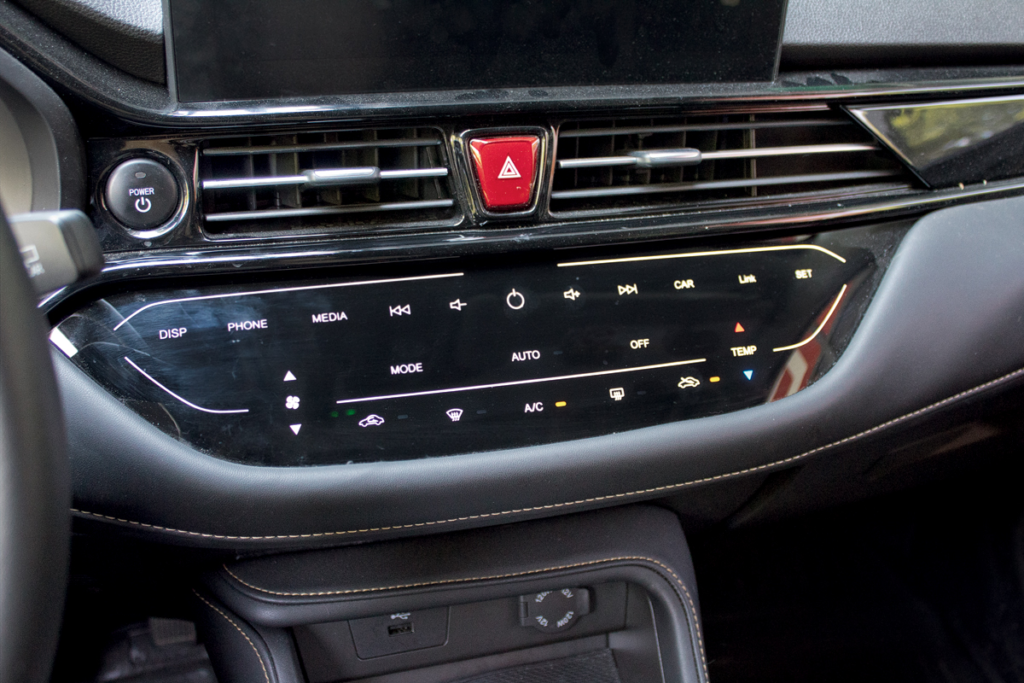
The touchpad duplicates the functions of the main screen, but is difficult to use due to the lack of tactile or audio feedback.
The claimed WLTP range is 410 km. My rental Moskvich had a 96% charge, promising 395 km. After driving just 18 km, I couldn’t fully evaluate these numbers, but initial impressions suggest approaching the claimed range is realistic.
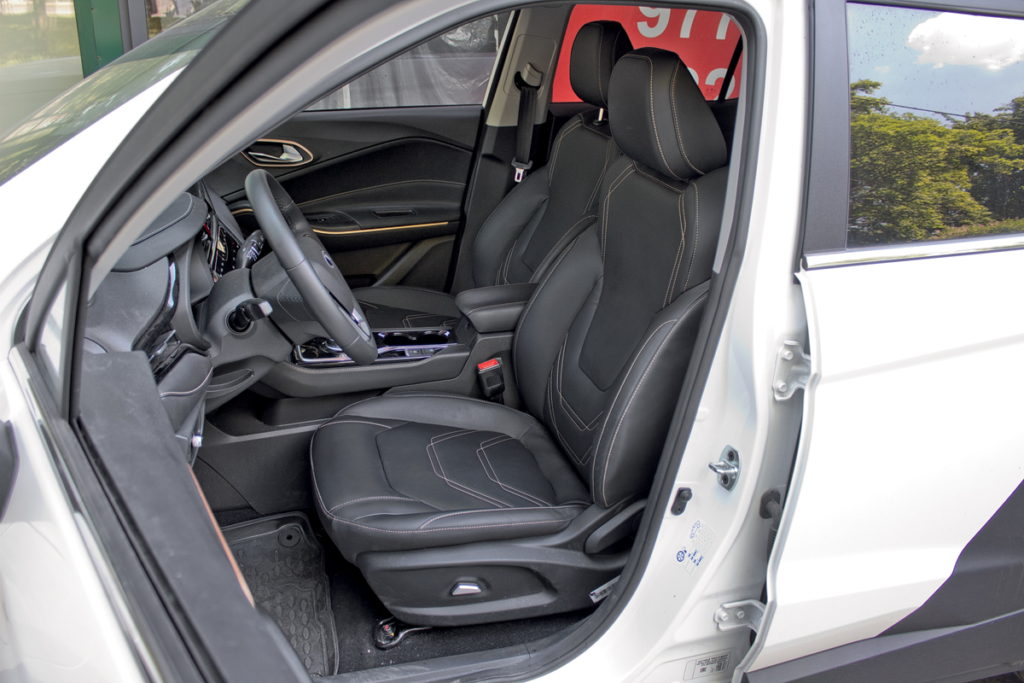
This seat only looks good, but in reality it is soft and uncomfortable. Only the cushion has electric drive, the back is adjusted manually
In summary, the electric side of this JAC-Moskvich hybrid isn’t cutting-edge but is decent—just needing software refinements. As an overall car, however, it leaves much to be desired. The suspension is extremely stiff, causing discomfort on urban bumps and requiring careful passage over speed humps. Road noise is unexpectedly prominent inside, the driver’s seat is uncomfortable, and the steering wheel is vague, with height-only adjustment insufficient for my 186 cm stature.
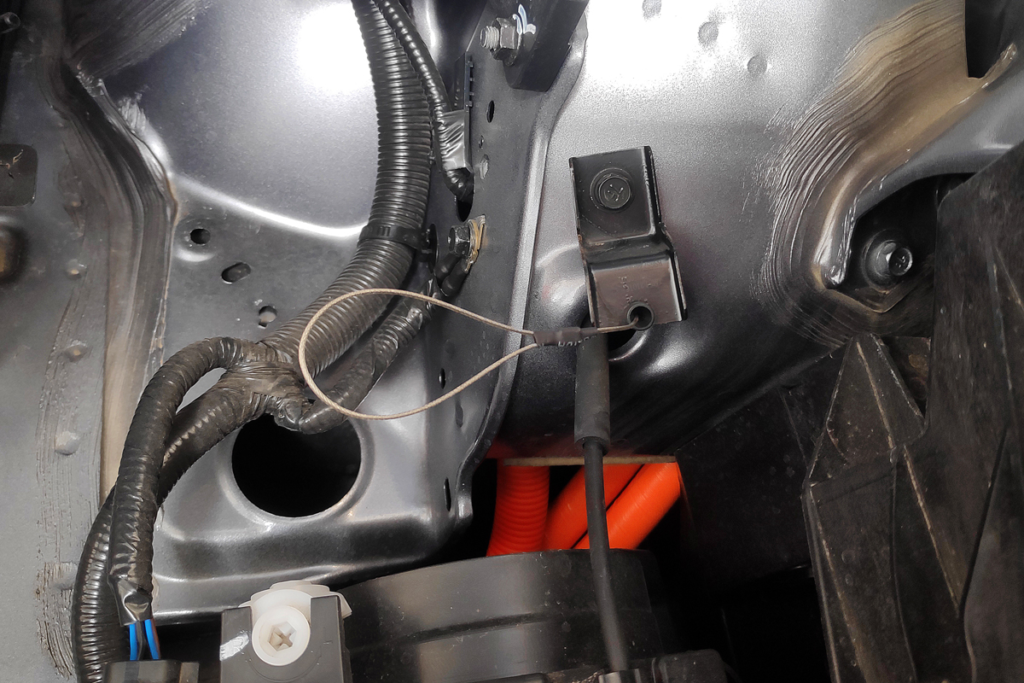
This loop on the right under the hood is designed for emergency release of the charging port.
Most disappointing was the climate control system—calibration issues plague even petrol-powered Moskviches. In this electric version, the air conditioner was practically ineffective during hot weather. I eventually turned it off and opened the windows—like in a Zhiguli many years ago…
Perhaps this Moskvich was already tired from car sharing? Yet, its odometer showed only 2900 km—practically new!
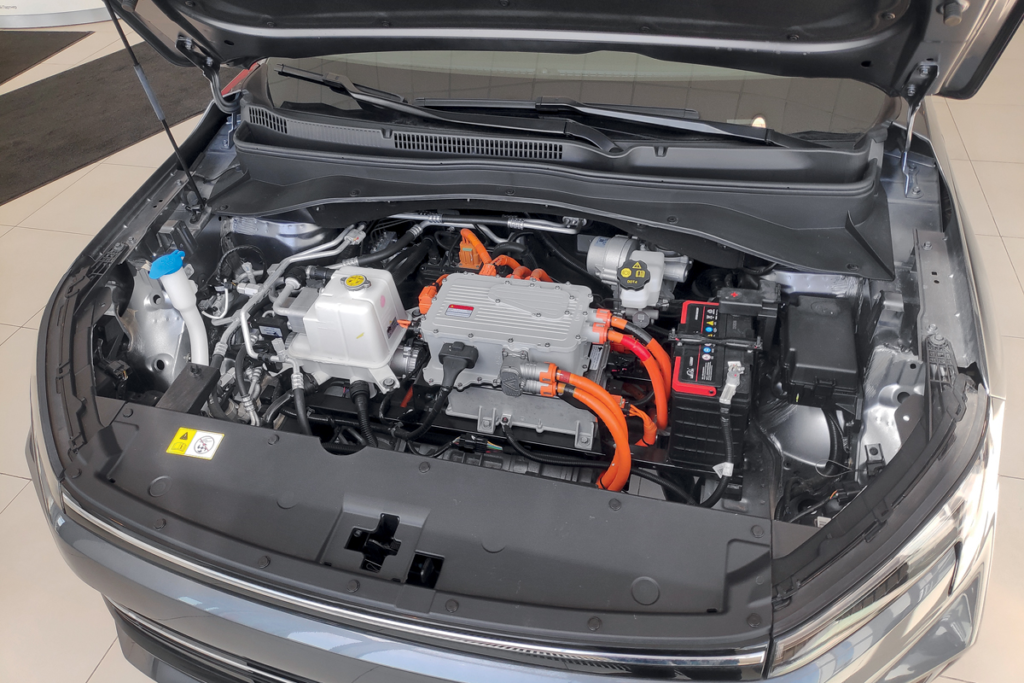
All electrical components are freely located under the hood
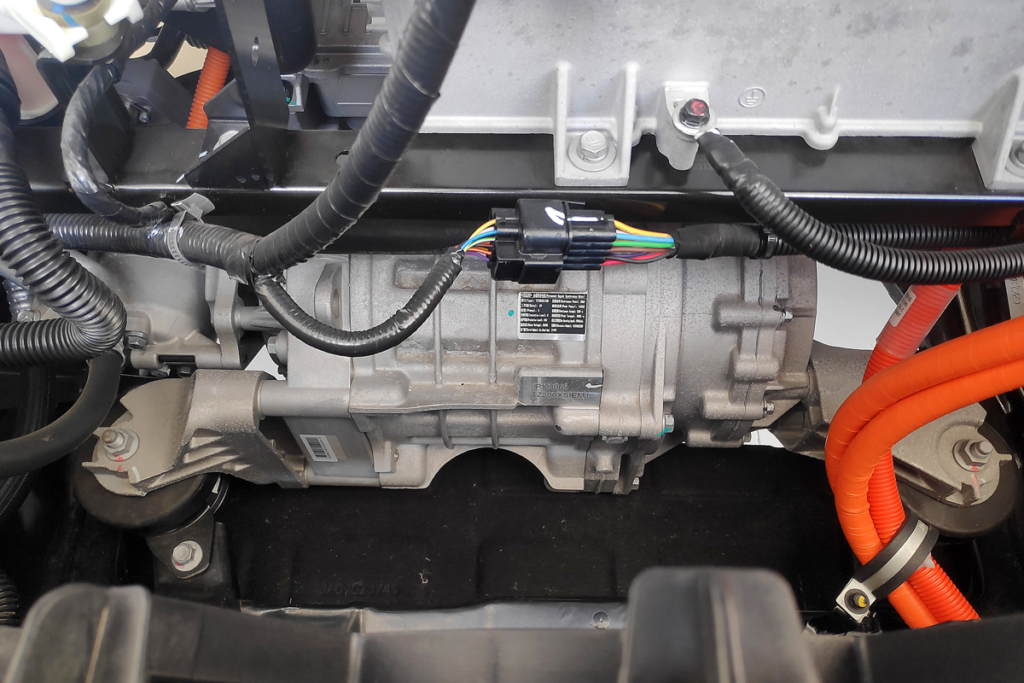
At the very bottom is a three-phase synchronous electric motor TZ200XS, which can spin up to 11,000 rpm
Undoubtedly, the “three” does have its practical advantages—a relatively spacious cabin, decent trunk, and panoramic roof. However, after one and a half years of Russian production, no additional heated features have appeared (only the mirrors and front seats are heated), nor has the chassis adaptation been performed. One might overlook all these shortcomings with the gasoline-powered Moskvich, priced at 1.7–1.9 million rubles after the winter price reduction. But the electric version costs 4.1 million rubles! Even considering the government subsidy, available only when purchasing on credit, it comes down to 3.2 million rubles. At this price point, one expects a far more appealing set of consumer features.
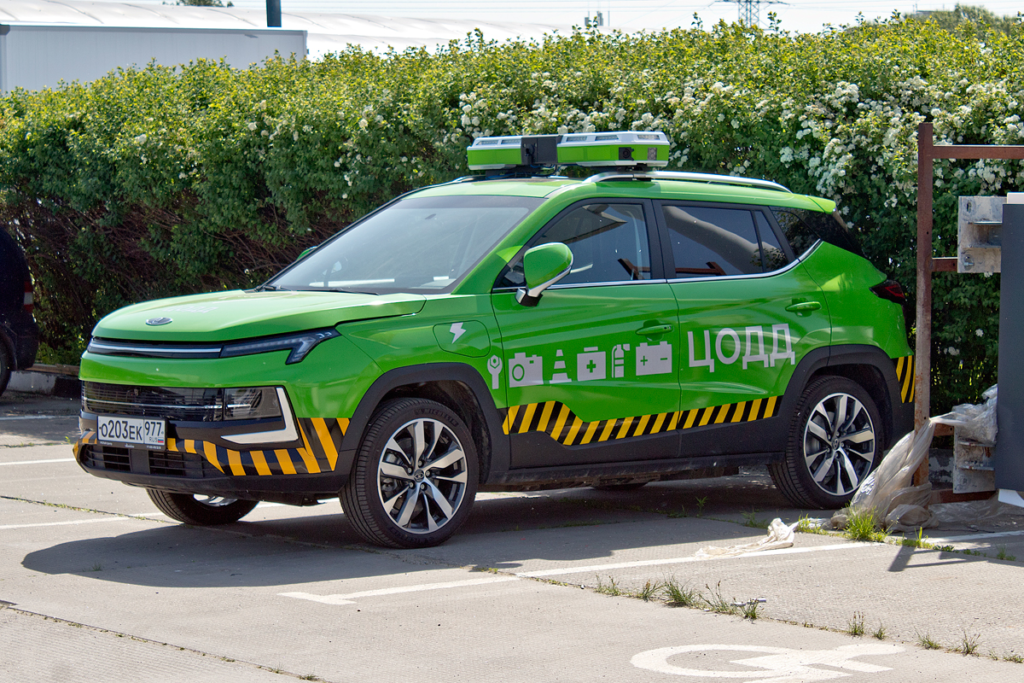
One of the Electric Moskvich’s Professions
By the way, do private customers even buy electric Moskviches? At the end of May, only one Moscow dealer had these cars available, and I went there to investigate. The saleswoman candidly admitted that individual buyers rarely show more than casual curiosity in electric vehicles. Most purchases come from corporate clients—primarily state organizations. Presumably, these entities independently solve the charging issue, as the dealer didn’t offer a single charging station suitable for garage installation.
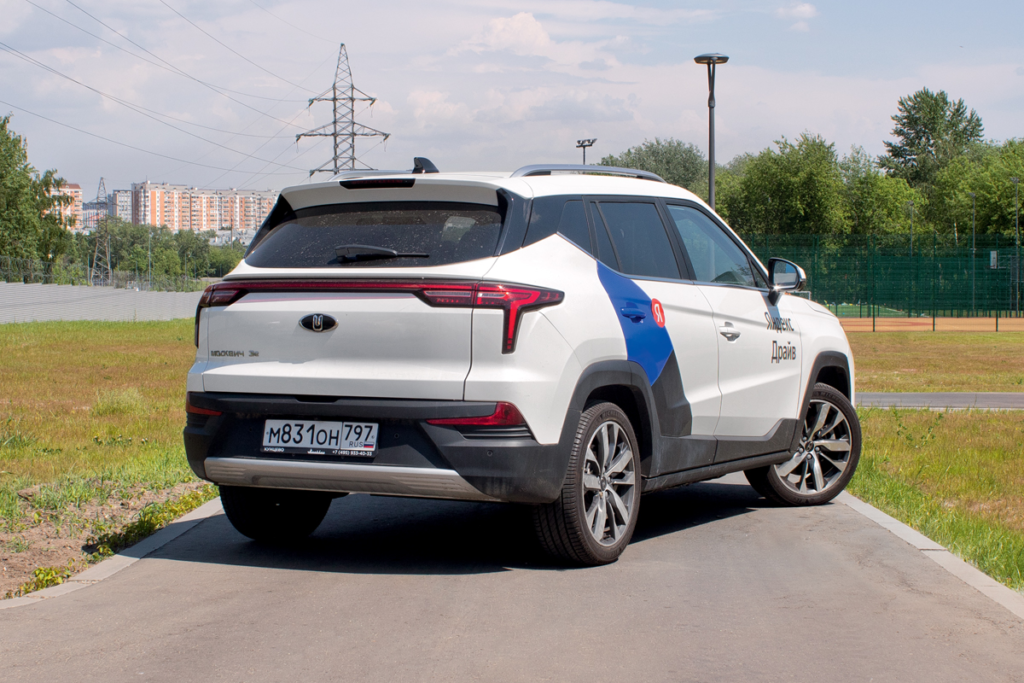
According to Autostat data, only 645 electric Moskviches were registered from January to May of this year. Without a price reduction and significant improvements in overall vehicle quality, it’s difficult to expect higher sales figures. Personally, I couldn’t find a single compelling reason to purchase this electric crossover. Another “three”—the Tesla, even if used—appears far more attractive at the same price.
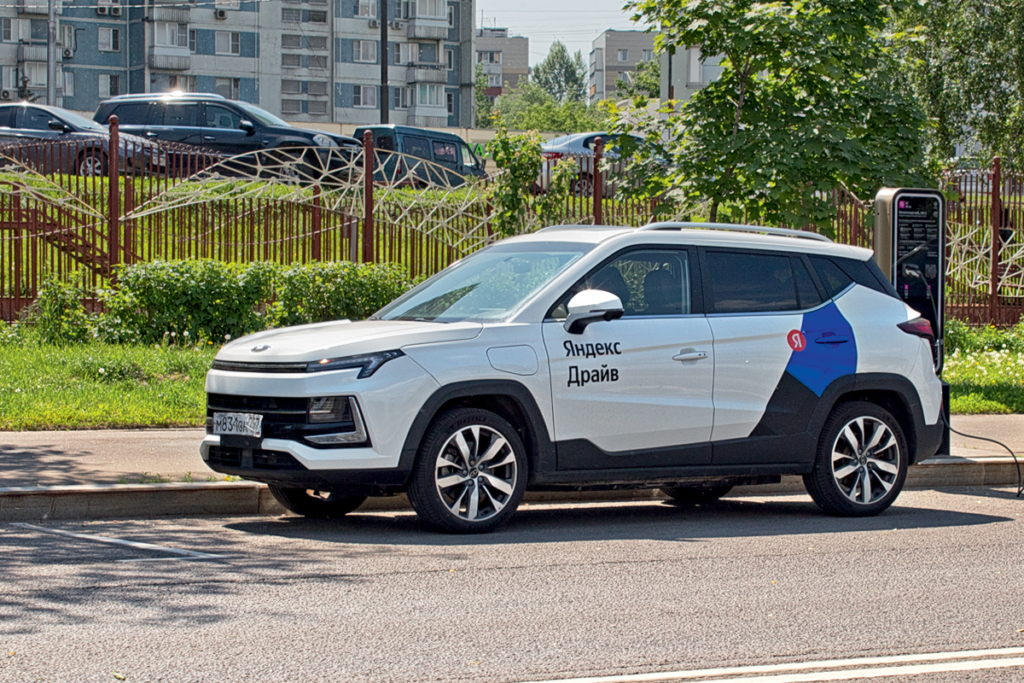
| Parameter | Moskvich 3e (Electric Vehicle) |
|---|---|
| Body type | Five-door station wagon |
| Seating capacity | 5 |
| Dimensions (mm) Length Width Height Wheelbase Track (front/rear) Ground clearance (mm) | 4410 1800 1660 2620 1510 / 1500 170 |
| Luggage capacity, L | 520–1050* |
| Curb weight, kg | 1800 |
| Gross weight, kg | 2175 |
| Motor | Electric, synchronous, permanent magnet |
| Motor location | Front axle, transverse |
| Max. power, hp/kW | 193 / 142 |
| Max. torque, Nm | 340 |
| Drive type | Front-wheel drive |
| Front suspension | Independent, spring, MacPherson |
| Rear suspension | Semi-independent, spring |
| Front brakes | Ventilated disc |
| Rear brakes | Disc |
| Tire size | 225/45 R18 |
| Max. speed, km/h | 140 |
| Acceleration 0–100 km/h, s | 9.7 |
| Traction battery type | Lithium-ion (NCA) |
| Battery capacity, kWh | 65.7 |
| Range (WLTP), km | 410 |
*With rear seats folded
Photo: Igor Vladimirsky
This is a translation. You can read the original article here: Электрик на час: знакомство с кроссовером Москвич 3е

Published July 03, 2025 • 8m to read

